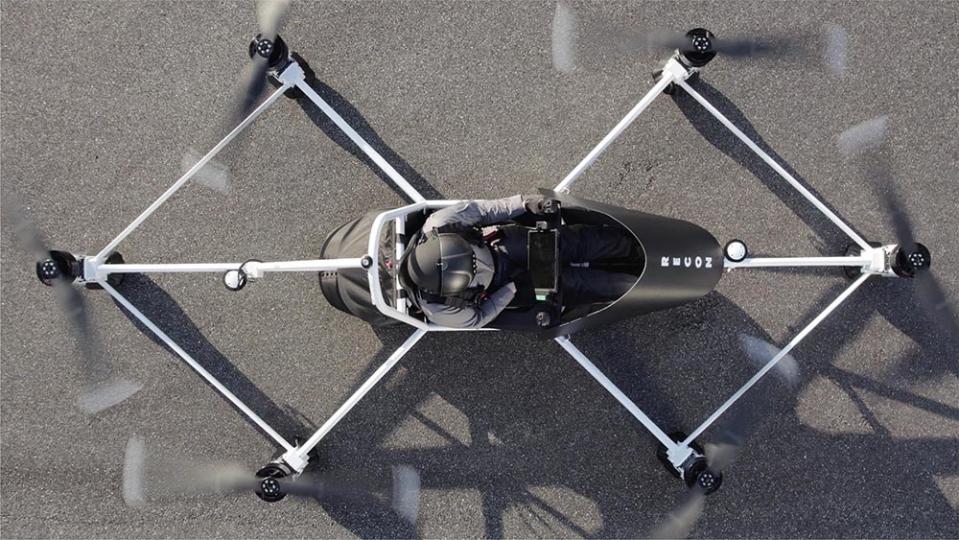The Ryse Recon Is an Ultra-Light eVTOL for One Person. We Took It for a Ride.

Hovering 10 feet over the ground, I feel like Aladdin on his flying carpet, save for the fact that I’m clutching two joysticks that control every move and I have the advantage of being generally familiar with non-carpet airborne experiences. My seemingly magic ride is courtesy of the Ryse Recon, an electric vertical takeoff and landing (eVTOL) craft that requires just a 15-minute tutorial that mostly covers how to operate those joysticks—left for altitude; right for speed and direction. Piloting sans pilot’s license may sound like a bad idea (not to mention illegal), but here I am, gently making forward progress and fluidly moving side to side while strapped into the single seat, which is designed to withstand a crash generating up to 8 Gs. Within no time, all I want to do is go higher and faster.
I am one of the first journalists to fly an eVTOL, and it’s clear to me (and the FAA) that these electric craft will soon be traversing our skies. Expect single-seaters flying over unpopulated areas in the next two years; fleets of air taxis weaving between skyscrapers by 2030 (with the helicopter-shuttle market as we know it disappearing); and once the public accepts the idea, autonomous aircraft comprising the majority of eVTOLs, perhaps in the next decade. Anderson Cooper’s recent ride in Lift Aircraft’s Hexa, flown remotely from the ground, demonstrated that technology is progressing; mine shows that semiautonomous flight is here: I control altitude, speed, and direction. Technology handles the rest.
More from Robb Report

Flying unlicensed is indeed verboten, save for the FAA’s Part 103 Ultralight category, which is where a half dozen eVTOL makers have identified space in which to maneuver. The category’s restrictions—no operation over inhabited areas, a 254-pound weight limit for the model, and a 63 mph top speed—mostly confine these machines to wilderness regions, ranches, and beachfronts. Ryse Aerotech’s first customer, scheduled to receive his Recon by year’s end, will fly from his lakefront home to work, cutting his commute time from 25 minutes to 120 seconds.
Priced at $150,000, the utilitarian-looking transport is built on an aluminum frame (the production model will be made of sleeker carbon fiber) and is fit with six 40 Kv electric motors spinning the props, each powered by a 100-volt DC battery. Everything was designed in-house with a focus on systems redundancy for safety.

After my initial jitters subside, flying the Recon is intuitive and noisy and, most importantly, feels safe.
Sensing the stable craft respond with a touch—forward, sideways, backward, or pivoting on its own axis—is an endorphin rush that leaves me repeating the words “so much fun” for about 10 minutes when back on the ground. And that’s after just two five-minute flights at low speed and altitude. I can only imagine what it’d feel like soaring at its sweet spot of 60 mph at 400 feet.
Speed is regulated by altitude. In Taxi mode, flying at 10 feet, the craft can reach only 12 mph; climbing to 15 feet puts the machine into Loiter mode, with a 22 mph top speed; Cruise mode kicks in at 35 feet, maxing out at 63 mph. My second flight is cut short after I apparently enter a trailer’s private airspace and am instructed to descend. But no experience is still no problem, as all that’s required is initiating the auto-land sequence, which makes me feel like I, too, have my own genie.
Best of Robb Report
Sign up for Robb Report's Newsletter. For the latest news, follow us on Facebook, Twitter, and Instagram.

